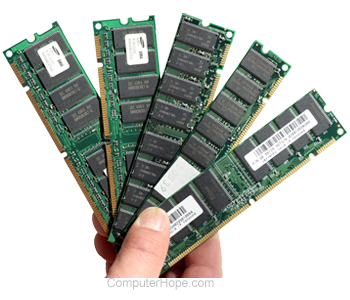Volatile memory

Volatile memory is a type of storage whose contents are erased when the system's power is turned off or interrupted. An example of volatile memory is RAM (random-access memory).
When you are working on a document, it is kept in RAM. If the computer you're using is disconnected from power, your work is lost because it was not stored in permanent (non-volatile) memory. For this reason, we recommend saving your documents or other data to a non-volatile storage medium, such as a hard drive, SSD (solid-state drive), or USB (universal serial bus) flash drive.
Volatile memory is also sometimes called temporary storage.
The opposite of volatile memory is non-volatile memory.
Why do computers have volatile memory?
Volatile memory is much faster than non-volatile memory. However, it is also more expensive. Computers use volatile and non-volatile memory to help balance cost with performance. As faster technologies like NVMe (Non-Volatile Memory Express) become cheaper, it's possible in the future that computers may only use non-volatile memory.
Dynamic storage, Hardware terms, Memory terms, Non-volatile, Temporary
